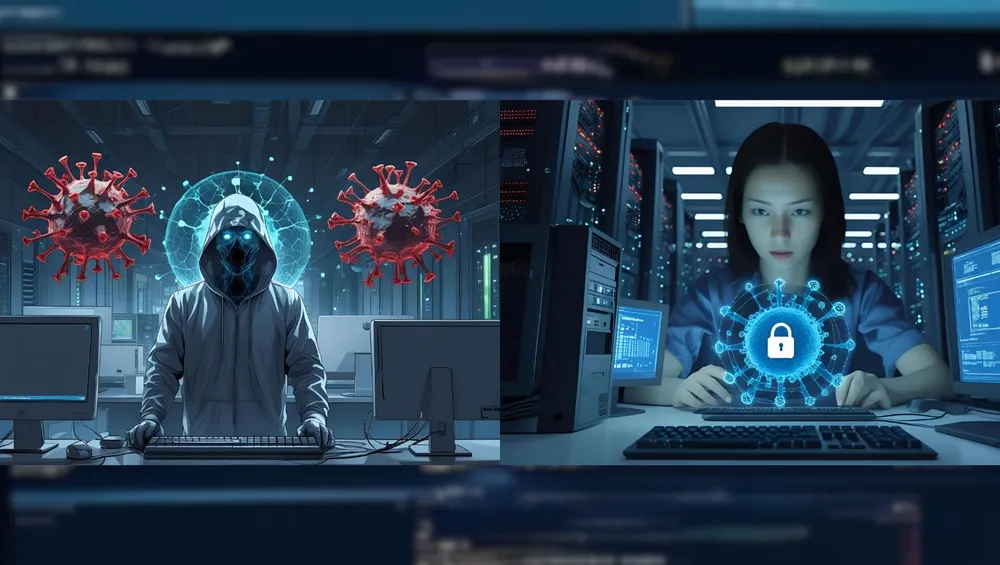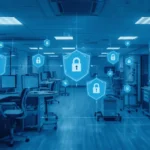Most organizations believe they’re protected against ransomware. They have backups, antivirus software, and firewalls. They’ve invested in cybersecurity training and implemented access controls. Their security dashboard shows green lights across the board.
Then ransomware strikes, and they discover their protection was largely theoretical.
The gap between perceived security and actual ransomware readiness is often measured in millions of dollars and months of recovery time. Organizations that thought they were prepared find themselves facing extended downtime, massive recovery costs, and business disruption that threatens their very survival.

This disconnect exists because traditional security measures often focus on prevention rather than response and recovery. While prevention is important, ransomware attacks have become so sophisticated that assuming you can prevent all attacks is dangerously naive. True ransomware readiness requires a comprehensive approach that addresses prevention, detection, containment, and recovery capabilities.
A ransomware readiness scorecard provides a systematic method for evaluating your actual preparedness across all these critical areas, identifying gaps before they become catastrophic vulnerabilities.
From Cybersecurity to Cyber Resilience: When, Not If
The cybersecurity industry is shifting from prevention-focused security to comprehensive cyber resilience. This reflects a critical realization: ransomware attacks are not a matter of “if” but “when.”
Traditional cybersecurity focuses on building walls – firewalls, antivirus, access controls. While important, these assume perfect prevention is achievable. Sophisticated ransomware operations prove this assumption wrong.
Cyber resilience acknowledges that some attacks will succeed and focuses on maintaining operations and recovering quickly when they do. Rather than just preventing attacks, resilient organizations prepare for successful compromise with robust detection, containment, and recovery capabilities.
This is particularly critical for ransomware, which specifically targets an organization’s ability to recover. Even strong preventive controls become irrelevant when ransomware encrypts critical systems and data. Cyber resilience ensures recovery capabilities remain protected and available even when primary systems are compromised.

Understanding the Ransomware Readiness Framework
Effective ransomware readiness assessment goes beyond checking security tool implementations to evaluate your organization’s actual capability to survive and recover from a successful attack. This assessment framework embodies the cyber resilience approach by assuming attacks will succeed and measuring your ability to maintain operations and recover quickly.
The framework encompasses five critical domains:
Prevention Controls that reduce the likelihood of successful initial compromise, including email security, endpoint protection, network segmentation, and access management.
Detection Capabilities that identify ransomware activity quickly enough to limit damage, including behavioral monitoring, anomaly detection, and security operations center capabilities.
Containment Procedures that can rapidly isolate infected systems and prevent ransomware spread throughout your environment.
Recovery Capabilities that can restore business operations quickly and completely, including backup systems, disaster recovery procedures, and business continuity planning.
Organizational Readiness that ensures your team can execute effective response procedures under the stress and time pressure of an actual attack.
Each domain contains multiple specific controls and capabilities that contribute to overall ransomware resilience. A comprehensive scorecard evaluates not just whether these controls exist, but whether they function effectively under real-world attack conditions – the hallmark of true cyber resilience.
Prevention Controls: Your First Line of Defense

Prevention controls form the foundation of ransomware readiness by reducing the likelihood that attacks will successfully compromise your systems initially.
Email Security and Phishing Protection
Email remains the primary vector for ransomware delivery, making email security controls critical for prevention. However, effective email protection goes beyond basic spam filtering to include advanced threat detection, attachment scanning, and link analysis.
Key evaluation criteria include whether your email security can detect zero-day threats, block malicious attachments before they reach users, analyze links in real-time for malicious content, and provide user-friendly reporting mechanisms for suspicious emails.
Equally important is whether your organization has implemented email authentication protocols like SPF, DKIM, and DMARC that prevent email spoofing attacks designed to bypass security filters.
Endpoint Protection and Management
Modern endpoint protection must go beyond signature-based antivirus to include behavioral analysis, application control, and device management capabilities.
Critical assessment factors include whether endpoint protection can detect and block unknown malware variants, prevent unauthorized applications from executing, monitor for suspicious behavioral patterns, and maintain protection when devices operate outside your network perimeter.
Endpoint management capabilities are equally important, including the ability to remotely isolate infected devices, deploy security updates rapidly across all endpoints, maintain inventory of all devices accessing your network, and enforce security configurations consistently.
Network Segmentation and Access Controls

Network segmentation limits ransomware spread by creating barriers between different parts of your environment. However, effective segmentation requires more than just network infrastructure – it requires comprehensive access management and ongoing validation.
Assessment criteria include whether critical systems are isolated from general user networks, backup systems operate in separate network segments with restricted access, administrative access is limited and monitored, and network communications between segments are explicitly controlled and logged.
Access controls must enforce least-privilege principles while maintaining operational efficiency, including multi-factor authentication for administrative access, regular review and removal of unnecessary permissions, time-limited access for temporary needs, and comprehensive logging of all access activities.
Detection Capabilities: Identifying Attacks Early
Even with strong prevention controls, sophisticated ransomware attacks may still achieve initial compromise. Early detection becomes critical for limiting damage and enabling effective response.
Behavioral Monitoring and Anomaly Detection
Traditional signature-based detection fails against custom ransomware variants designed to evade known security tools. Behavioral monitoring provides the capability to detect malicious activity based on patterns and anomalies rather than specific signatures.
Effective behavioral monitoring evaluates unusual file access patterns that might indicate encryption activity, abnormal network communications that could represent command and control traffic, unexpected process behavior that might indicate malicious code execution, and deviations from normal user activity patterns.
The key assessment factor is whether your monitoring systems can identify these behavioral indicators in real-time and generate actionable alerts for investigation.
Security Operations and Response Capabilities
Detection capabilities are only valuable if they generate timely human response. This requires security operations capabilities that can triage alerts, investigate potential incidents, and initiate response procedures.
Critical evaluation criteria include whether you have 24/7 monitoring and response capabilities, defined procedures for alert triage and investigation, tools and access needed to investigate potential incidents, and clear escalation procedures for confirmed threats.
For organizations without internal security operations capabilities, this often means leveraging managed security services that can provide these capabilities through external providers.
Containment Procedures: Limiting Damage
When ransomware is detected, rapid containment becomes critical for limiting damage and preventing spread throughout your environment.
Isolation and Quarantine Capabilities
Effective containment requires the ability to quickly isolate infected systems without disrupting business operations unnecessarily. This includes both automated isolation triggered by security tools and manual isolation procedures that can be executed rapidly.
Assessment factors include whether infected systems can be automatically isolated from the network, manual isolation procedures can be executed within minutes, isolation doesn’t disrupt unaffected systems unnecessarily, and isolated systems maintain logging and monitoring capabilities for investigation.
Communication and Coordination Procedures
Ransomware incidents require coordinated response across multiple teams including IT, security, legal, communications, and executive leadership. Effective containment depends on clear communication procedures that ensure all stakeholders understand their roles and responsibilities.
Key evaluation criteria include whether incident communication procedures are documented and tested, all stakeholders understand their roles during incidents, backup communication methods exist if primary systems are compromised, and decision-making authority is clearly defined for different incident scenarios.
Recovery Capabilities: Restoring Operations
Recovery capabilities determine how quickly your organization can resume normal operations after a ransomware attack. This requires more than just having backup systems – it requires tested, validated procedures for complete operational restoration.
Backup Systems and Data Protection
Backup systems form the foundation of ransomware recovery, but effective backup protection requires more than just copying files to secondary storage. Modern ransomware specifically targets backup systems to prevent recovery, making advanced backup protection essential.
Immutable Backup Strategies
Immutable backups represent one of the most effective defenses against ransomware attempts to prevent data recovery. Unlike traditional backups that can be modified or deleted, immutable backups are write-once, read-many (WORM) systems that cannot be altered once written.
This immutability provides critical protection because even if attackers gain administrative access to your backup systems, they cannot delete or encrypt immutable backup data. The backup remains intact and available for recovery regardless of the scope of the ransomware attack.
Effective immutable backup implementation requires air-gapped storage systems that are physically or logically disconnected from production networks, time-based retention policies that prevent premature deletion of backup data, and separate authentication systems that don’t rely on the same credentials as production environments.
Critical assessment factors include whether backups are truly immutable and cannot be modified by any user or process, backup systems are isolated from production networks and cannot be accessed through compromised credentials, backup integrity is regularly verified through restoration testing, and backup coverage includes all critical systems and data with appropriate retention periods.
Business Continuity and Operational Procedures
Recovery involves more than just restoring technical systems – it requires returning to normal business operations while maintaining security and compliance.
Key evaluation criteria include whether alternative operational procedures exist for critical business functions, staff understand their roles during recovery operations, customer and vendor communication procedures are defined, and recovery procedures address compliance and regulatory requirements.
Testing these procedures through tabletop exercises and simulation helps ensure they work effectively under actual incident conditions.
Organizational Readiness: Human Factors
Technical controls and procedures are only effective if your organization can execute them properly during the stress and time pressure of an actual ransomware incident.
Incident Response Training and Preparedness
Regular training and exercise programs ensure that staff can execute incident response procedures effectively when needed.
Assessment criteria include whether incident response procedures are regularly tested through tabletop exercises, staff understand their specific roles during ransomware incidents, training addresses decision-making under pressure and time constraints, and exercises identify and address procedural gaps.
Decision-Making and Authority
Ransomware incidents often require rapid decisions about system isolation, business operations, external communication, and recovery priorities. Clear decision-making authority prevents delays that can worsen damage.
Key factors include whether decision-making authority is clearly defined for different incident scenarios, executives understand the business impact of various response options, legal and compliance considerations are integrated into decision-making procedures, and backup decision-makers are identified and trained.
Industry-Specific Considerations
Different industries face unique ransomware challenges that affect readiness assessment criteria and priorities.
Healthcare Ransomware Readiness
Healthcare organizations face particular complexity due to life-safety considerations, regulatory requirements, and specialized medical equipment.
Healthcare-specific assessment factors include whether patient care can continue during system outages, medical devices are included in security monitoring and incident response procedures, HIPAA compliance is maintained during incident response and recovery, and backup procedures address life-safety systems and emergency operations.
Legal Practice Considerations
Law firms encounter unique challenges around client confidentiality and privilege protection during ransomware incidents.
Legal-specific evaluation criteria include whether incident response procedures protect attorney-client privilege, client notification requirements are addressed in response plans, case management and deadline tracking have backup procedures, and privilege considerations are integrated into forensic investigation procedures.
Manufacturing and Operational Technology
Manufacturing organizations must address both business systems and production environment security in their ransomware readiness assessment.
Manufacturing-specific factors include whether production systems are included in monitoring and response procedures, operational technology networks have appropriate security controls, production shutdown and restart procedures are documented and tested, and business continuity addresses both administrative and production operations.
Scoring and Prioritization
A comprehensive ransomware readiness scorecard provides both overall readiness assessment and specific prioritization for improvement efforts.
Scoring methodologies should weight different controls based on their impact on overall readiness and the specific threat landscape facing your organization. Critical controls that prevent or limit major damage receive higher weighting than secondary controls that provide defense-in-depth.
The scorecard should identify specific gaps that represent the highest risk and provide clear prioritization for remediation efforts based on cost, complexity, and risk reduction impact.
Continuous Improvement and Reassessment
Ransomware readiness isn’t a one-time assessment but requires ongoing evaluation and improvement as threats evolve and organizational changes occur.
Regular reassessment ensures that readiness levels are maintained as new systems are implemented, staff changes occur, and threat landscapes shift. Annual comprehensive assessments combined with quarterly targeted evaluations of high-risk areas provide appropriate oversight for most organizations.
The Ocean Solutions Approach
At Ocean Solutions, we’ve developed comprehensive ransomware readiness assessments that evaluate all critical domains while accounting for industry-specific requirements and operational constraints. Our approach embodies the cyber resilience philosophy by focusing on your organization’s ability to survive and recover from successful attacks, not just prevent them.
Our assessment methodology combines technical evaluation of security controls with operational testing of procedures and organizational readiness. We don’t just identify whether controls exist – we validate whether they function effectively under realistic attack scenarios, including situations where primary security systems may be compromised.
We place particular emphasis on immutable backup strategies and recovery capabilities that remain functional even when attackers gain administrative access to primary systems. This resilience-focused approach ensures that organizations can maintain business operations and recover quickly regardless of attack sophistication.
Our industry-specific expertise ensures that assessments address the unique challenges facing healthcare organizations, legal practices, manufacturing operations, and other specialized environments that require tailored approaches to ransomware resilience.
Most importantly, our assessments provide actionable prioritization for improvement efforts, helping organizations focus their security investments on the areas that will most significantly improve their ability to survive and recover from ransomware attacks.
The question isn’t whether your organization will face ransomware attacks – it’s whether you’ll be ready to respond effectively and recover quickly when they occur. A comprehensive ransomware readiness scorecard provides the foundation for that resilience.
Contact Ocean Solutions today to discuss how our ransomware readiness assessment can help your organization understand and improve its actual protection level.






